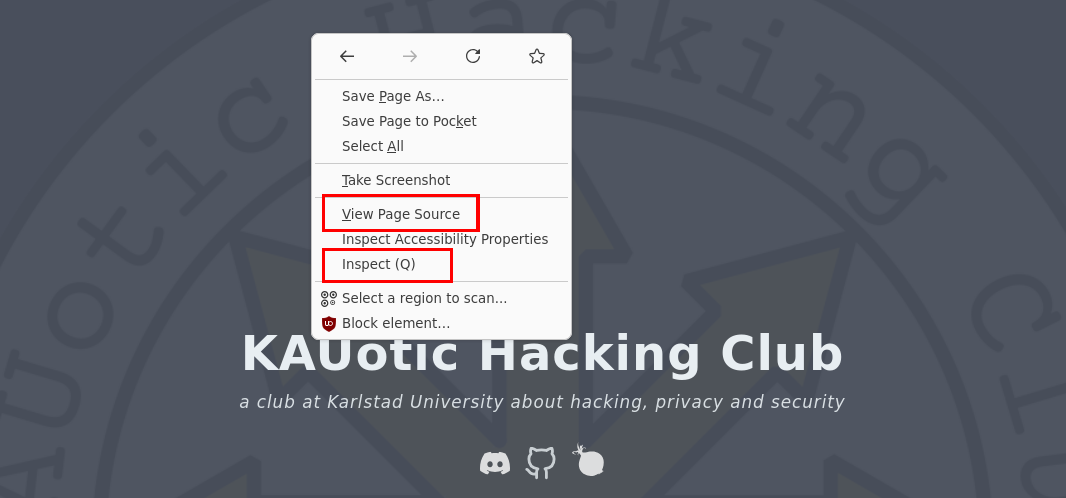I am assuming that you have used a web browser to visit a website at some point! Since this part of the Internet is so widely used, it is of great interest to us passionate about cybersecurity.
The most simple way to start digging deeper into websites is viewing the source. You can do this by either pressing F12 on your keyboard when visiting a website, or right-click and select “View Page Source” or “Inspect”. You can also add “view-source:” in front of the URL.

Here you can find JavaScript adding functionalities to the website, references to hidden or forgotten pages, and sometimes interesting comments or even passwords (yes, it happens).
You might have opened the browser dev tools (F12 or “Inspect”) which can show you a lot more about the website. Here you can inspect the traffic to and from the webserver, view and modify your cookies, and run JavaScript.
Sometimes you might want a web proxy, an application which intercepts the packets from and to your browser. In the application you can view and modify fields and automate tests. Also keep an eye on the URL, it might show you some interesting parameters that you can play with.
There is a common type of web attacks classified as “injections”. SQL injection, JavaScript injection (also known as Cross-site scripting (XSS)), and Template injection. All of these methods rely on input fields to change the behavior of the website.
Useful platforms
- https://overthewire.org/wargames/natas/
- https://tryhackme.com/path/outline/web
- https://academy.hackthebox.com/module/details/35
- https://academy.hackthebox.com/module/details/75
Useful tools
- curl
- burpsuite
- mitmproxy
- wappalyzer
- sqlmap
Try your skills
If you feel ready then you can try to solve our Web challenges (registration code: 1337). When you have solved three of them, head over to one of our CTF events and you will get a sticker!